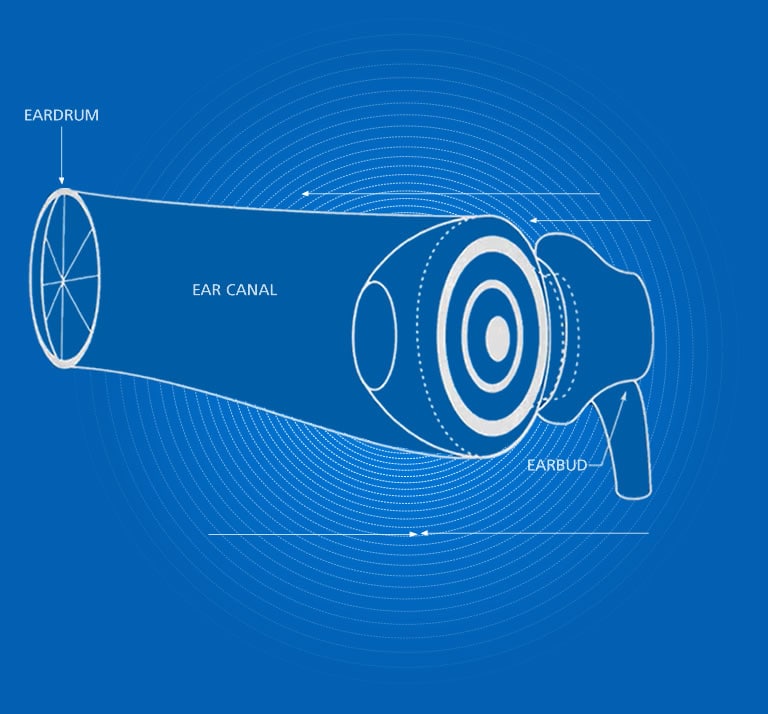Keyboard ALT + g to toggle grid overlay
Asius Technologies
Youthful rebellion sparks
the in-ear
revolution
Nashville, 1965. Musical wunderkind Stephen Ambrose, 13, created an in-ear hearing device out of putty, glue, and radio parts to secretly listen to the rock music his father, a classically trained musician, forbade. Ambrose went on to invent the in-ear monitoring technology that would become today’s earbuds.
But the use of earbuds has been linked to hearing loss. So now Ambrose and Asius Technologies are leading another revolution in sound.

The in-ear monitoring technology invented by Ambrose delivers full-spectrum, high-fidelity sound, and has been used by almost every major musical act onstage. It’s transformed the way people across the globe listen to music.
But Ambrose had no idea that the earbud revolution he’d started would cause a
77% increase
in hearing loss.


The
catch-22
of hearing
The problem of hearing loss troubled Ambrose, who founded Asius Technologies to address the issue. With a grant from the National Science Foundation, he discovered a catch-22 right inside our ears:
Earbuds seal up the ear canal, turning sound into pneumatic pressure.
High pressure causes the eardrum to tighten in self-protection.
The tightening degrades sound quality and wears out the eardrum.
So you turn the music up louder, which makes the eardrum tighten and wear out even more.
All you need
is an extra
eardrum
This discovery led Ambrose and his team to another eureka moment. Ambrose designed a solution that breaks the cycle of volume and hearing loss: a second, synthetic eardrum right inside the earbud. It works like this:
1.

Earbuds seal up the ear canal, turning sound into pneumatic pressure.
2.

The synthetic eardrum embedded in the earbud absorbs the pneumatic pressure.
3.

Your eardrum no longer tightens up and gets worn out.
4.

You keep the volume lower and your eardrums stay relaxed.
The synthetic eardrum not only prevents hearing loss; when your eardrums are relaxed, sound quality greatly improves, and lower volumes sound louder.
Asius’s new earbuds make you feel like you’re listening to music with a magnifying glass.
Leaps and bounds
When asked how he designed the new earbuds, Ambrose thinks back to his early work on the in-ear monitors: “I used to carry 21 bags of tools with me on tour with Stevie Wonder. I would take what happened at the concert that night and tweak the ear monitors to improve sound quality.”
Now Ambrose and his team use specialized software and 3D printers to quickly simulate and revise the mechanical properties of their designs. They measure the impact of minute tweaks, shaving off half a micron here and there. And when the tools they need don’t yet exist, “we use this wonderful software to make the tools ourselves.”
What used to take a month—to go from prototype to design—now takes 30 minutes.



The future
of sound
As the Asius team was working to solve the problem of Earbud Deafness Syndrome, it also discovered a new way to harvest energy from sound.
When sound is pumped into a box with a tiny hole approximately 300 microns in diameter, the hole creates a variance in pressure. This pressure can then be harvested—indeed, Asius has harvested enough energy from this device to power flight. The team calls it the “modified synthetic jet.”
This is just the beginning of what Ambrose envisions for the future. He believes we’ll be able to use the sound from the human heart to power pacemakers, and sound from car mufflers to inject oxygen into carburetors.
The sound
of resolve
Ambrose knows that along the way, there will be skeptics. He’s certainly dealt with his fair share, but that only fuels his determination, and that’s a good thing. After all, his in-ear monitor was the forerunner to the earbuds we know today.
“If you’re doing anything worthwhile, you’re going to get some resistance,” he says. “Don’t be beaten up by ‘it’s going to cost so much’ and ‘will anyone ever use this?’”
You never know. Your idea just might take flight.


Learn more about some of the products Asius Technologies used
Related links:
















